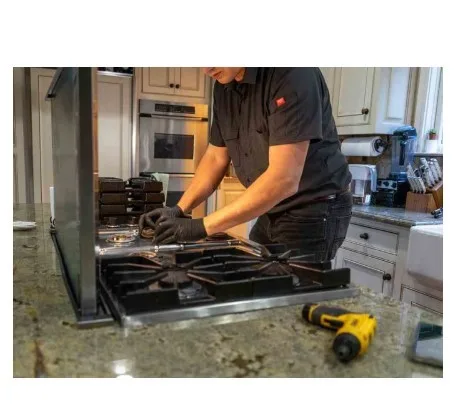Hood Repair: How to Fix and Maintain Your Kitchen Range Hood

A kitchen range hood is one of the most important appliances in any modern kitchen. It removes smoke, grease, steam, and cooking odors, keeping the air clean and safe while you cook. However, like any appliance, it can develop problems over time. A hood repair is essential to restore its performance, extend its lifespan, and maintain a healthy cooking environment. Whether your range hood is noisy, not venting properly, or has stopped working altogether, understanding how hood repair works can save you money and keep your kitchen functioning smoothly.
Why Hood Repair Matters
A properly working range hood improves indoor air quality by venting out smoke, steam, and airborne grease. It also prevents mold and bacteria from forming due to excess moisture and keeps kitchen surfaces cleaner. When a range hood malfunctions, these benefits disappear, leading to lingering odors, sticky residue, and poor ventilation. Regular hood repair and maintenance ensure the appliance operates efficiently and continues to protect your home environment.
Common Range Hood Problems
Kitchen hoods face several common issues that require attention. One frequent problem is a fan that stops working or operates at low speed, which affects the hood’s ability to remove smoke and steam. Another common issue is excessive noise, often caused by loose fan blades, worn-out bearings, or a faulty motor. Lights inside the hood may flicker or stop working, indicating electrical issues or burned-out bulbs. Grease buildup can block filters, reducing airflow and efficiency. In some cases, the hood may fail to turn on completely due to wiring faults or control board malfunctions. If you encounter any of these problems and need expert help, professional services like https://prime-fix.com/ can diagnose the issue and restore your kitchen hood to full working condition quickly and safely.
Diagnosing Hood Issues
Effective hood repair begins with proper diagnosis. If your range hood is not working, first check the power supply and ensure the unit is plugged in and receiving electricity. If the fan is running weakly or not at all, inspect the motor and fan blades for damage or obstructions. Loud noises usually indicate worn-out bearings or loose components that need tightening or replacement. If airflow is poor, the filters may be clogged and need cleaning or replacing. For lighting issues, replacing bulbs or checking wiring connections is often sufficient.
DIY Hood Repair Tips
Some basic hood repairs can be done without professional help. Cleaning or replacing grease filters regularly is one of the easiest and most effective maintenance tasks. Most filters can be washed with warm, soapy water or replaced with new ones if they are too dirty or damaged. If the hood is noisy, tightening screws and securing loose parts may resolve the issue. Replacing a light bulb or checking the circuit breaker if the hood is not powering on are simple DIY steps. However, always disconnect power before performing any repairs to ensure safety.
When to Call a Professional
While DIY fixes can solve minor problems, some issues require professional hood repair services. If the motor has burned out, the control board is faulty, or the wiring is damaged, it’s safer to hire a technician. Professionals have the tools and expertise to diagnose electrical problems, replace defective components, and ensure the unit is safe to use. Attempting complex repairs without the proper knowledge can cause further damage or pose electrical hazards.
The Hood Repair Process
A typical hood repair service starts with a thorough inspection to identify the source of the problem. The technician will test the fan, motor, lights, switches, and electrical components. After diagnosing the issue, they will clean internal parts, replace any damaged components, and test the unit to ensure proper operation. In some cases, if the unit is very old or severely damaged, replacing the entire hood might be more cost-effective than repairing it.
Preventing Future Problems
Preventive maintenance is the key to avoiding frequent hood repairs. Clean the filters regularly to maintain airflow and efficiency. Wipe down the hood exterior and interior surfaces to prevent grease buildup. Check the fan and motor periodically for signs of wear or unusual noise. Avoid overloading the electrical circuit the hood is connected to, and make sure the vent ducts are free from blockages. These simple steps will help your range hood operate smoothly and last longer.
Conclusion
A kitchen range hood plays a vital role in maintaining a clean, comfortable, and safe cooking environment. When it stops working properly, hood repair becomes essential to restore its performance and protect your kitchen from smoke, grease, and odors. While some minor issues can be fixed with DIY maintenance, more serious problems require professional attention. By understanding how your hood works, addressing problems quickly, and performing regular maintenance, you can keep this essential appliance running efficiently for years to come.
